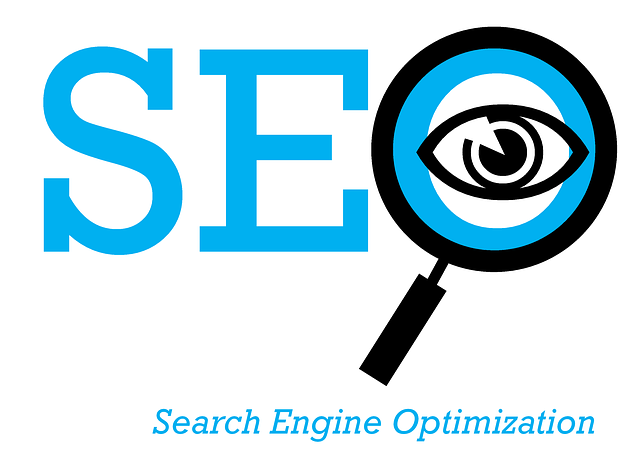Perhaps users wish to learn further concerning web hosting as well as the services it provides, but perhaps users do not even understand anything around this? There’s no need to be embarrassed if you don’t know this knowledge. At some time, everyone needs to start from the beginning. Let’s get started studying web hosting now.
Lets begin, whatever exactly are web hosting but also how will this work?
Web hosting is the practice of renting out space and bandwidth on a powerful computer server linked to the Internet at super-fast rates. Hosting companies handle huge circuits of high-powered online webservers inside a real building referred as a datacentre. Those computer systems are connected to the web via a high-speed, usually simultaneous connectivity. These storage systems have both primary plus backup power, a rapid Web connection, but also protection analysing workers.
Web hosting firms supply a client with a portion of disc space and accessible bandwidth for a monthly charge. Once a client has joined up, they may upload files to their area on the webserver, where anybody with an Internet connection can see them. The monthly price charged by the web hosting firm is far cheaper than the expense of running a server from your own house or data centre. This is why these businesses exist. They’ll take care of every one of your equipment, software, as well as other technological needs.
Types of web hosting
Several kinds of web hosting services are available, but the three most common are shared, reseller, and dedicated. Each sort of hosting serves a distinct function.
Shared Web Hosting
The most common kind of hosting is shared web hosting. Shared hosting is when a web hosting firm gives you a piece of a high-powered server’s disc space and bandwidth. This server hosts several other websites, and the hosting provider is likely to have many of these servers in a huge data centre. As many additional websites allotted to that machine share the server’s resources.
If you’re searching for a low-cost option and don’t expect your site to have more than a few thousand daily visits, shared web hosting is the way to go.
Reseller Web Hosting
Reseller web hosting is a popular and inexpensive way to establish your own web hosting company. Private-label and service reseller hosting are the two forms of reseller hosting.
The ideal reseller plan is the private label since it gives you complete control over your customers’ websites. A private-label plan lets the reseller retain the whole monthly payment from the web-hosting client, but the reseller must pay the bigger hosting business a monthly charge for reseller space. The larger the profit margin for a private-label reseller, the more hosting accounts they may offer. You can host many more websites with private-label hosting than you could with shared hosting. This is an excellent option for someone who can host many sites in one area to save money.
Reseller of services plans allows you to resell a bigger web hosting company’s conventional web hosting plans for a lower price and earn a monthly fee as long as the client remains a customer. You don’t have control over client websites with this package, and you just get a percentage of the possibly monthly earnings.
Dedicated Web Hosting
Dedicated web hosting is the most powerful and cost-effective way to host a popular website without having to purchase your hardware or spend hundreds of dollars per month for a fast Internet connection. Dedicated hosting comprises a single server that is not shared with anybody else. This gives you the most flexibility in terms of setup. Dedicated hosting is a must-have option for anybody with a busy website.
Web Hosting Considerations
Are you curious about the various details provided in web hosting plans? In this part, I’ll go over the most crucial factors to consider when selecting a decent web host.
Price
One of the essential factors is the cost of web hosting services. Many hosting businesses provide low-cost hosting services, but they may fall short in other aspects. Don’t be fooled by a hosting package’s low pricing. Various hosting providers offer fantastic pricing and equally good features. Though cost is indeed an important component that explore whenever purchasing a web hosting package, there are far bigger to be considered while picking a reputable web host.
Storage Space / Disk Space
The amount of physical storage space provided by a web server to store your web files is referred to as disc space. Most hosting providers now offer plans with disc space defined in gigabytes; however, some still offer storage capacity measured in megabytes. Depending on your demands, you may need more or less file storage capacity. Generally speaking, the more disc space available, the better.
Data Transfer / Bandwidth
When it comes to picking a good hosting plan, the amount of bandwidth offered may make a major impact. In general, the more bandwidth that a hosting business provides, the better. As your company expands, you’ll be able to handle more visitors to your website. Web hosting businesses that promise limitless or unmetered bandwidth should be avoided. While many of them are genuine services, others are overselling bandwidth, hoping that the ordinary customer would not consume much.
Customer Support
It is critical in every organization to deliver exceptional customer service. This applies to web hosting as well. Many hosting providers are accessible 24 hours a day, 7 days a week, if you have a problem with your website, while others are only available during particular hours of the day. While a company’s website falls in the middle of the night when they are not accessible, income is lost. You should be certain that the web host you choose provides round-the-clock assistance.
Money-Back Guarantee
The majority of web hosting firms offer a thirty-day money-back guarantee. Some may supply one for an extended time, but be aware of not providing a money-back guarantee. Unless a firm has established itself to be a leader in the field and has a good reputation, I would not acquire web hosting services unless they give at least a 30-day money-back guarantee.
Operating System
An operating system is a software that governs how a computer user interacts with the machine’s actual hardware. Most websites on the Internet use the Linux operating system. In general, Linux is much more stable than Windows. When it comes to running a website, stability is crucial. As such reason, I’ve agreed to host our sites using a Linux functioning platform. Some websites have unique needs that the Windows operating system can only meet, but there are always alternatives.
Backup
A decent web hosting provider will regularly back up the data on all of the web servers. The more often you back up your data, the better. A web hosting business should, at the absolute least, back up website files regularly.
Control Panel
The control panel is the website administrator’s point of contact between the host server and their workstation linked over the Internet. A well-organized and simple-to-use control panel interface is vital. cPanel is my favorite control panel, and it is one of the most popular web hosting control panels available today. Plesk is another fantastic option, and many businesses will build their control panel for you. Most web hosting providers will include a link to a demo of the control panel that comes standard with their hosting services. The control panel used is a personal choice, but it must be user-friendly.
Email is a critical component of online communication. Most web hosting providers will provide you with more email addresses and storage space than you would ever use. You should be on the lookout for companies that have decided to be a little strict with their email accounts and only provide a limited number or amount of message space.
Uptime
“uptime” refers to how often a company’s average website is accessible online. It is unreasonable to expect a corporation to deliver a perfect 100 percent uptime. Due to issues such as hardware, software, and power outages, this is impossible. The overwhelming majority of businesses excel at uptime and even guarantee it. It is nevertheless a good idea to pay attention to its uptimes. It is generally not worth hosting with that firm, if at least 99.5 percent.
Statistics
It’s useful to know how many visitors you’ve had, where they came from, how long they stayed on your site, and how much bandwidth they consumed as a webmaster. Such data is collected by your web server but also saved in a data base. Statistics software may read this data and offer useful information to the website. That information obtained through such archives could be very beneficial in improving website visitor experiences.
FTP
The file transfer protocol is abbreviated as FTP. It’s a method for swiftly uploading and downloading large amounts of data to and from a web server. Most web hosting businesses provide FTP access to their clients’ accounts. FTP is an extremely helpful function when purchasing a web hosting plan.
Scripting
Many scripting languages have been developed since the inception of the World Wide Web, and they have grown into the dynamic and interactive environment we have today. Users may use a programming language to provide features to your site, including generating numbers of importing information via another independent database. Electronic commerce is feasible thanks to scripting languages. PHP, ASP, JSP, Coldfusion, VBscript, Javascript, and Perl are examples of these languages. I will not go into depth on them in this essay for brevity. If you’re familiar with these languages, you’ll know what to look for in a web server that supports them.
Databases
A database is a collection of data that may be manipulated in several ways. Databases are utilized for applications like shopping carts, message boards, and product catalogs on the Internet. The greater the number of databases your web hosting service permits you to build, the more apps you may run on your server. More sophisticated webmasters employ databases, but the information is freely accessible online if you’re interested.
Conclusions
Web hosting may be a challenging option with hundreds of hosting firms to choose from. It’s vital to pick a package that meets your requirements and work with a reputable hosting business. We sincerely believe you find this article useful in selecting on a webhost company. Good luck with your hosting!








In 2004, Google took action against websites spamming them, and the first website was ‘banned’ from the Internet. They also filed a lawsuit against the “SEO Company” responsible. In 2006, all you needed to rank a website was links back to it, therefore, purchasing links/link exchange was all the rage, and most websites included a page where they listed firms and connections to their website (I am still amazed how many websites continue this practice). During 2004 through 2008, Google’s latest algorithm clamped down on poor indexing practises and corporations, and also spamming and link buying, as the sole legitimate “player” inside the search engine industry.